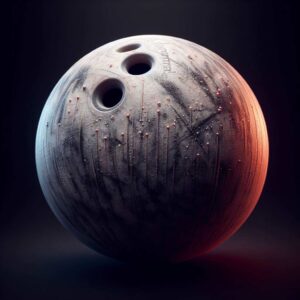Whether you’re a seasoned league bowler or just getting started in the sport, understanding the differences between urethane bowling balls and reactive resin coverstock can be the key to improving your game. These two materials make up the outer shell of modern bowling balls and each one delivers a vastly different motion and reaction on the lanes.
Before purchasing your next ball, it’s crucial to decide which coverstock suits your individual style and the oiling conditions you typically face. In this comprehensive guide, we’ll break down urethane vs reactive resin balls to help you make an educated choice and elevate your scoring potential.
What is Urethane Coverstock?
Urethane bowling balls are covered in a durable but relatively low-friction material made from a blend of polyurethane and other compounds. This sturdy yet slightly porous urethane coverstock allows the ball to maintain its motion and reaction characteristics for a long time, even with regular use.
One of the main advantages of urethane balls is their unmatched predictability and control. The smooth, non-porous surface coupled with the high traction urethane creates allows these balls to skid straight down the lane before making a consistent backend move. This makes urethane an ideal choice for bowling styles that prioritize hitting the target pocket precisely.
While they can’t match the aggressive hook potential of reactive resin, quality urethane balls produce respectable backend continuation due to their ability to conserve energy from the roll phase. Plus, urethane balls tend to maintain their factory-finished out-of-the-box reaction for far longer than reactive balls, resulting in lower maintenance costs and hassle over time.
However, the lower friction of urethane means there is less traction in the oil, so these balls can’t muscle through heavy oil patterns as easily. The controlled back-end motion also caps their overall hook potential on drier lane conditions compared to reactive balls.
What is Reactive Resin Coverstock?
On the other side, bowling balls categorized as “reactive resin” feature an extremely porous and oil-absorbing outer shell made from a mixture of solid particles suspended in a resin material. The microscopic pores in this coverstock act like tiny feet, digging into the oil on the lane to create more friction and traction.
This added traction enables reactive resin balls to rev up and generate an exaggerated backend motion that hooks into the pocket violently. For bowlers with a high rev rate that want to maximize their hook potential, reactive balls are the way to go on most standard oil patterns.
Another major benefit is that reactive balls store more energy during the skid phase to be transferred into an amplified backend reaction due to their oil absorption. This makes them ideal for playing closer inside lines and attacking heavier oil volumes.
The porous nature of reactive resin balls is also a double-edged sword, however. Since they absorb oil quickly, their core coverstock reaction changes rapidly as oil is picked up over a series of shots. This can lead to over/under reactions and inconsistency, shortening the lifespan of the ball before resurfacing or replacing is required.
Urethane vs Reactive Resin: Key Differences
Now that we’ve covered the basics of each coverstock, here’s a head-to-head comparison of how urethane and reactive balls differ:
Hook Potential and Ball Motion
Reactive resin balls are in a class of their own when it comes to aggressive hooking action and backend continuation potential. Their porous shells allow them to rev up substantially and drive through the pins with maximum entry angle. Urethane balls still hook but in a smoother, more arcing pattern.
Longevity and Cost Over Time
Urethane covers wear and absorb oil at a much slower rate than reactive resin, maintaining their out-of-the-box reaction over hundreds of games. Reactive balls need resurfacing and re-conditioning much sooner, resulting in higher maintenance costs long-term.
Performance on Different Lane Conditions
Reactive resin balls shine when there is oil to be absorbed, especially on medium-heavy oil patterns. Urethane balls excel on drier, lower-volume conditions where reactive balls may over-hook and burn energy too early.
Drilling Specifications and Layouts
Because urethane balls don’t rev up and flare as much, more conservative drilling layouts are often used. Reactive resin balls commonly use stronger layouts like longer pin-to-PAP distances to promote evenmore track flare.
Factors to Consider When Choosing
Before deciding between urethane and reactive resin bowling balls, carefully assess:
Your Bowling Style
“Strokers” and players who keep their hand behind the ball and don’t rev it up as much will usually prefer the tame yet predictable motion of urethane balls. “Crankers” with lots of revs and aggressive hand positions get the most out of reactive resin’s energy transfer.
Typical Lane Conditions
Competition on drier house shots requires the controlled mobility of urethane, while heavier out-of-rotation patterns are better attacked with reactive coverstock’s traction through oil. Medium oil volumes can accommodate either coverstock type depending on your preference.
Your Rev Rate and Ball Speed
Slower ball speeds and lower rev rates enhance control on urethane. Reactive resin benefits higher revs and speeds where more energy can be transferred into hook at the back end.
Personal Hook/Skid
Preference Some bowlers simply prefer urethane for the controllable arcing motions, while others crave the backend fireworks of reactive resin balls aggressively revving off the dry boards.
When to Use a Urethane Ball
There are certain situations where urethane just makes sense, including:
Drier Lane Conditions
When facing drier, burned-up oil patterns, urethane’s controlled motions prevent over-reactions and deflections. The smooth shells maintain their line while reactive balls may burn up energy too early.
Demanding Precision Shots
Spares that require precision entry angles, such as 7-pins and corner singles, are much easier to convert using the predictable hook arcs of urethane balls over reactive’s bigger backend moves.
Older, Worn-Down Lane Surfaces
Bowling centers with dated, worn lane surfaces and minimal oil application benefit from urethane’s traction formula for controlled backend motion without burning up.
When to Use a Reactive Resin Ball
On the flip side, reactive resin bowling balls showcase their strengths in scenarios like these:
Medium-Heavy Oil Volumes
The absorptive, porous shells of reactive resin balls excel at blowing through heavier oil patterns compared to urethane, generating extreme traction downlane.
Maximizing Hook Potential
If your bowling style allows for big revs and you’re looking to create maximum hook in your shot, nothing comes close to the snap off the dry boards that reactive resin produces.
Younger, Less-Worn Lane Surfaces
More reactive balls thrive on the fresh, purer synthetic surfaces of newer bowling lanes by fully absorbing and utilizing the oil volume before it’s broken down.
Having Both in Your Arsenal
While some bowlers stick to just urethane or reactive resin based on their preferences, the wisest strategy is to have both coverstock materials in your arsenal. This diversity allows you to match up effectively on any oil pattern by making adjustments.
A strong 3 or 4 ball arsenal for most bowlers would include:
- 1 urethane solid ball for drier lanes and demanding control shots
- 1 reactive resin solid ball for medium-heavy oil patterns
- 1 reactive resin pearl ball for lots of length and backend pop off dryer boards
- 1 plastic/urethane spare ball for maximizing deflection on single pin spares
Using the right tool for the job by cycling through urethane and reactive resin balls ensures you’re covered from front to back on the oil pattern. It also prevents your reactive balls from absorbing too much oil in one outing and burning up.
Proper Maintenance and Care
To get the most out of your investment, be sure to practice proper cleaning and maintenance based on each coverstock’s unique properties:
General Ball Maintenance
For any bowling ball, removing dirt, oil and debris buildup after each use is crucial. Use a USBC-approved ball cleaner and resurface occasionally to keep your balls rolling their best.
Urethane Coverstock
Urethane balls can handle more aggressive cleaning solutions containing harsh solvents. Use plastic ball cleaner/polish paired with short span ball spinner cycles to keep that fresh box finish.
Reactive Resin Coverstock
Overly harsh cleaners can deteriorate and clog the porous resin coverstock. Stick to USBC-approved resin-safe cleaners and polish concentrates. More frequent light resurfacing and re-polishing is needed.
Conclusion
When it comes down to it, both urethane and reactive resin coverstocks have distinct advantages that make them valuable assets in any serious bowler’s arsenal.
Urethane provides unmatched predictability, control, and longevity at the cost of some hook potential. Reactive resin unlocks explosively snappy backend movements but requires more frequent maintenance.
The wise strategy is to own at least one ball from each coverstock category. This gives you the ability to match up appropriately based on the specific lane conditions and desired ball motion for that day. A diverse arsenal allows you to make calculated moves and stay ahead of transitions.
For dry house shots that have burned up, the trusty urethane ball lets you pound away with control all day. When the fresh oil is thick, having a potent reactive resin ball allows you to maximize traction and hit pockets hard. And for tweeners looking to marry hook and control, pairing urethane and reactive resin pieces covers your bases.
At the end of the day, there is no “better” coverstock universally. The real advantage comes from deeply understanding each material’s characteristics.
With that knowledge, you can decide which coverstocks work best to complement your specific game and put together a high-level bowling ball lineup.
Whether it’s urethane’s dependable accuracy or reactive resin’s explosive scoring punches you crave, the right tool for the right condition can take your abilities to new heights.




